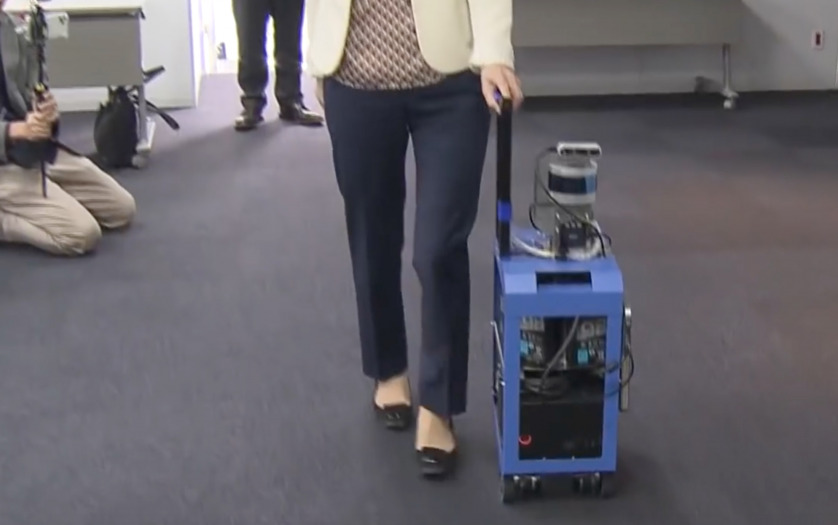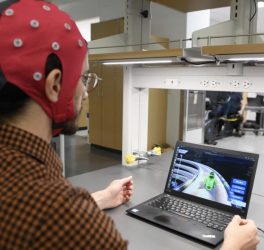
A consortium of five companies including IBM Japan Ltd. said Thursday that they will develop a navigation suitcase equipped with artificial intelligence to help guide people with vision disabilities, reports Jiji Press.
A demonstration using a prototype, currently under development, is scheduled for June 2020. Companies plan to make the suitcase available to the public by 2022, with hopes that it could replace guide dogs and canes.
The carryon-sized devices are equipped with artificial intelligence (AI), cameras and sensors and can be taken onboard aircraft. Users grab the handle, and say where they want to go out loud. The machine selects the best route using geographic information, and automatically leads users to their destination while steering away from other people and obstacles, moving at the user’s walking pace.
The project was inspired by Chieko Asakawa, a visiting professor at Carnegie Mellon University in the United States who is also a fellow at IBM. Asakawa is visually impaired.
“We would like to create an unrestrained, safe transportation,” said Asakawa at a press conference held in Tokyo.








